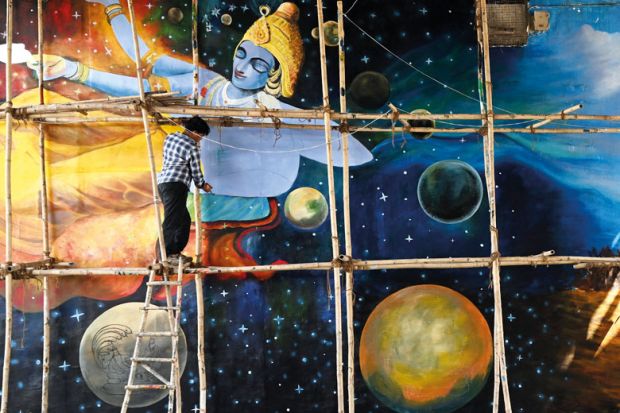With Indian policymakers expected to put forward legislation for its mega research funder in coming weeks, academics have expressed scepticism that the agency will be able to deliver on its promise.
Billed by India’s former education secretary as a “dream come true” for academics and a remedy to scant research funding, the National Research Foundation (NRF) is meant to “seed, grow and promote” research and encourage greater industry spending, in line with goals under India’s 2020 National Education Policy.
If approved by Indian parliament, the agency will become the country’s biggest research funder, bringing India’s research, now split among numerous agencies, under one umbrella. Modelled on the US-based National Science Foundation, the NRF has a budget of Rs50,000 crore (£4.7 billion) over five years starting in 2023.
Campus views: Is blended learning just a pipe dream for Indian HE?
According to reports, India’s prime minister Narendra Modi will become the body’s president, with the science and education ministers serving as its vice-presidents.
Scholars welcomed the idea of increased research funding but raised questions over a host of practical issues, including the NRF’s leadership, its ability to remedy long-lasting, bureaucracy-related woes, whether it can equitably distribute funding – and how it can attract the needed investment.
While the government has yet to detail the breakdown of funding and exact areas supported under the agency, according to some scholars it expects to contribute Rs14,000 crore, with another Rs36,000 crore coming from the public sector, industry and international funders.
Pushkar, director of the International Centre, Goa, said that mustering substantial funding from big companies or philanthropists is likely to prove difficult.
“It is a tough ask,” he said. “If I had to think about giving money to research, other than IITs and the Indian Institute of Science, I’d hesitate to give my money to other public institutions. There’s a trust problem there, an inefficiency problem…once the money is there, it may be spent in any number of ways.”
Still, Dr Pushkar appreciated the move to streamline the application process, saying it was preferable to send forms to one place.
Other scholars who spoke to Times Higher Education were less positive. Saumen Chattopadhyay, a professor at the Zakir Husain Centre for Educational Studies at Jawaharlal Nehru University, feared the use of a single platform would limit researchers.
“If there is just one agency for funding, and the proposal for funding is declined, the scientist will have no other recourse,” he said.
Professor Chattopadhyay worried that the new structure would reinforce the “inherent tendency” to favour India’s top institutions over their less resourced colleagues. Perhaps more concerning, he worried it would only direct social sciences into politically favoured areas.
“Objectivity is surely to be compromised. Criticality may be missing,” he said.
Another commenter, who wished to remain anonymous when criticising the government, believed the more centralised body would make it easier for “crony capitalism” to thrive, with favouritism toward institutions with ties to big industry.
He believed the organisation’s leadership structure, which puts party loyalists in charge for the sake of “optics”, would hurt its ability to support serious science.
“In which country does the prime minister sit at the top of the funding body?” he asked.
Ultimately though, the scholar believed these considerations were secondary to the ability of funders to cut red tape plaguing current agencies.
“They’re just repackaging old wine in a new bottle,” he said. “A very massive agency is not going to solve all the other problems present…it’s likely to become a bureaucratic behemoth.”
POSTSCRIPT:
Print headline: High hopes, low expectations for India’s ‘dream’ research funder
Register to continue
Why register?
- Registration is free and only takes a moment
- Once registered, you can read 3 articles a month
- Sign up for our newsletter
Subscribe
Or subscribe for unlimited access to:
- Unlimited access to news, views, insights & reviews
- Digital editions
- Digital access to THE’s university and college rankings analysis
Already registered or a current subscriber? Login








